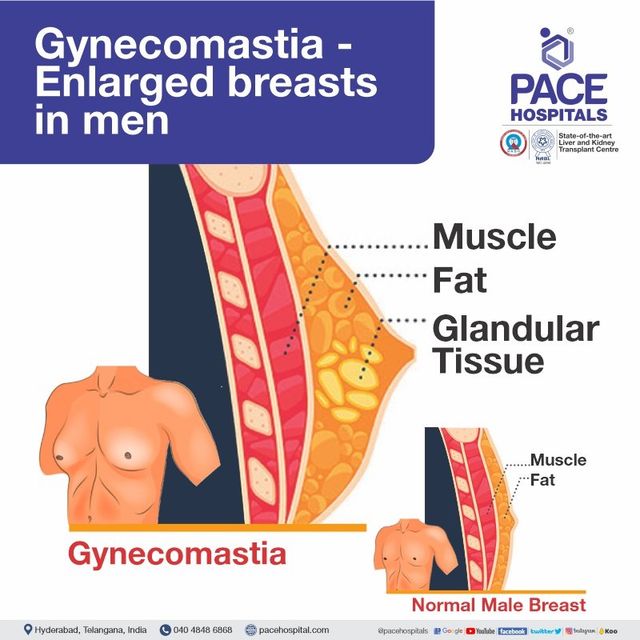Report on the Potential of Tirzepatide in Cancer Treatment and its Alignment with Sustainable Development Goals
A recent study indicates that GLP-1 receptor agonists, specifically tirzepatide, may have applications beyond weight management and diabetes, showing potential in oncology. This research aligns directly with key United Nations Sustainable Development Goals (SDGs), particularly SDG 3 (Good Health and Well-being), by exploring new avenues to combat non-communicable diseases.
Study Overview and Primary Findings
Research presented at the ENDO 2025 annual meeting detailed an experiment investigating the effects of tirzepatide on breast cancer tumors in mice. The findings suggest a significant correlation between the drug’s administration, weight reduction, and tumor shrinkage.
- Subject Group: 16 obese mice induced with breast cancer.
- Methodology: The subjects received either tirzepatide or a placebo every other day for a 16-week period. Tumor volumes were measured twice weekly.
- Primary Results: Mice treated with tirzepatide experienced an approximate 20% reduction in body weight, a decrease in liver fat, and a corresponding shrinkage in breast cancer tumors.
Implications for Sustainable Development Goals (SDGs)
The preliminary results of this study have significant implications for several SDGs, highlighting the interconnectedness of health, well-being, and global development targets.
SDG 3: Good Health and Well-being
This research directly supports SDG Target 3.4, which aims to reduce by one-third premature mortality from non-communicable diseases through prevention and treatment. Obesity is a major risk factor for several cancers, and this study explores a mechanism to mitigate that risk.
- Addressing Obesity: By effectively treating obesity, a primary risk factor, tirzepatide may serve as a preventative tool against obesity-associated cancers.
- Combating Cancer: The potential for the drug to directly reduce tumor size offers a new therapeutic pathway for breast cancer, the most commonly diagnosed cancer in women globally.
- Mechanism of Action: The link between obesity and cancer is multifaceted. This drug addresses several underlying factors:
- Widespread inflammation caused by obesity.
- Hormonal imbalances, specifically elevated estrogen levels resulting from excess abdominal fat.
- High insulin levels, which can stimulate estrogen production in fat tissue.
SDG 5: Gender Equality
Given that breast cancer disproportionately affects women, advancements in its treatment and prevention are crucial for achieving gender equality in health outcomes. By improving survival rates and reducing the burden of disease, such medical innovations contribute to the overall well-being and empowerment of women worldwide.
Broader Applications and Risk Assessment
Expanded Therapeutic Potential
The class of GLP-1 drugs, including tirzepatide, is being investigated for a wide range of health benefits that contribute to SDG 3. Ongoing research includes its potential to:
- Slow the progression of Alzheimer’s disease.
- Improve obstructive sleep apnea.
- Treat non-alcoholic fatty liver disease.
- Reduce cravings for alcohol and opioids.
Associated Risks and Considerations
While promising, the use of GLP-1 drugs is associated with potential side effects. A comprehensive approach to health requires acknowledging these risks.
- Common Side Effects: Gastrointestinal distress, such as nausea and vomiting.
- Less Common Side Effects: Hair loss and skin pain.
- Rare Side Effects: Reports have noted very rare instances of behavioral changes and vision impairment.
The report concludes that while the findings are preliminary, they suggest that new anti-obesity medications like tirzepatide could play a vital role in a multi-pronged strategy to reduce cancer risk and improve patient outcomes, thereby making a substantial contribution to achieving global health and development goals.
1. Which SDGs are addressed or connected to the issues highlighted in the article?
SDG 3: Good Health and Well-being
- The article directly addresses health issues, which is the central theme of SDG 3. It focuses on a new study for a drug, tirzepatide, that treats obesity and diabetes and shows potential for treating breast cancer. These are all significant global health challenges.
- The text highlights the connection between obesity, a non-communicable disease (NCD), and breast cancer, another NCD. The article states, “Obesity is a significant risk factor for breast cancer.” By discussing a potential treatment that tackles both, it aligns with the goal of promoting well-being and addressing major health problems.
2. What specific targets under those SDGs can be identified based on the article’s content?
Target 3.4: Reduce by one-third premature mortality from non-communicable diseases through prevention and treatment and promote mental health and well-being.
- The article’s core subject is the treatment of non-communicable diseases (NCDs). It discusses tirzepatide’s use for diabetes and obesity and its potential to shrink breast cancer tumors. The article explicitly links obesity to cancer: “our studies in mice suggest that these new anti-obesity drugs may be a way to reduce obesity-associated breast cancer risk or improve outcomes.” This directly relates to the “prevention and treatment” aspect of Target 3.4.
Target 3.b: Support the research and development of vaccines and medicines for the communicable and non-communicable diseases.
- The entire article is based on a “new study” presented at “ENDO 2025, the Endocrine Society’s annual meeting.” It details the research process involving mice and the findings related to the drug tirzepatide. This focus on scientific research and the development of new medicines for NCDs like cancer and diabetes directly supports the objective of Target 3.b.
3. Are there any indicators mentioned or implied in the article that can be used to measure progress towards the identified targets?
Indicators for Target 3.4
- Prevalence of obesity: The article identifies obesity as a primary risk factor. The study’s success was measured by weight loss, with the text stating that mice “shed about 20% of their body weight.” This implies that the prevalence of obesity is a key indicator for preventing related NCDs.
- Cancer incidence and tumor size: The study’s primary finding was that the mice “saw their breast cancer tumors decrease.” The researchers measured “tumor volumes twice a week.” This serves as a direct indicator of treatment effectiveness for cancer, a key NCD under this target.
- Mortality rate from cancer: While not explicitly measured in the study, the goal of improving “breast cancer outcomes” implies reducing the mortality rate associated with the disease. The article notes that “One in eight American women will likely be diagnosed with it,” highlighting the scale of the health risk that new treatments aim to mitigate.
Indicators for Target 3.b
- Development of new medicines: The article is centered on the drug tirzepatide, which is “sold as Mounjaro for diabetes and Zepbound for obesity.” The research explores its new application for cancer, indicating progress in the development and repurposing of medicines for NCDs. The article also mentions ongoing research for other conditions like Alzheimer’s disease and liver disease.
4. Table of SDGs, Targets, and Indicators
| SDGs | Targets | Indicators |
|---|---|---|
| SDG 3: Good Health and Well-being | Target 3.4: Reduce premature mortality from non-communicable diseases through prevention and treatment. |
|
| SDG 3: Good Health and Well-being | Target 3.b: Support the research and development of vaccines and medicines for non-communicable diseases. |
|
Source: nypost.com







